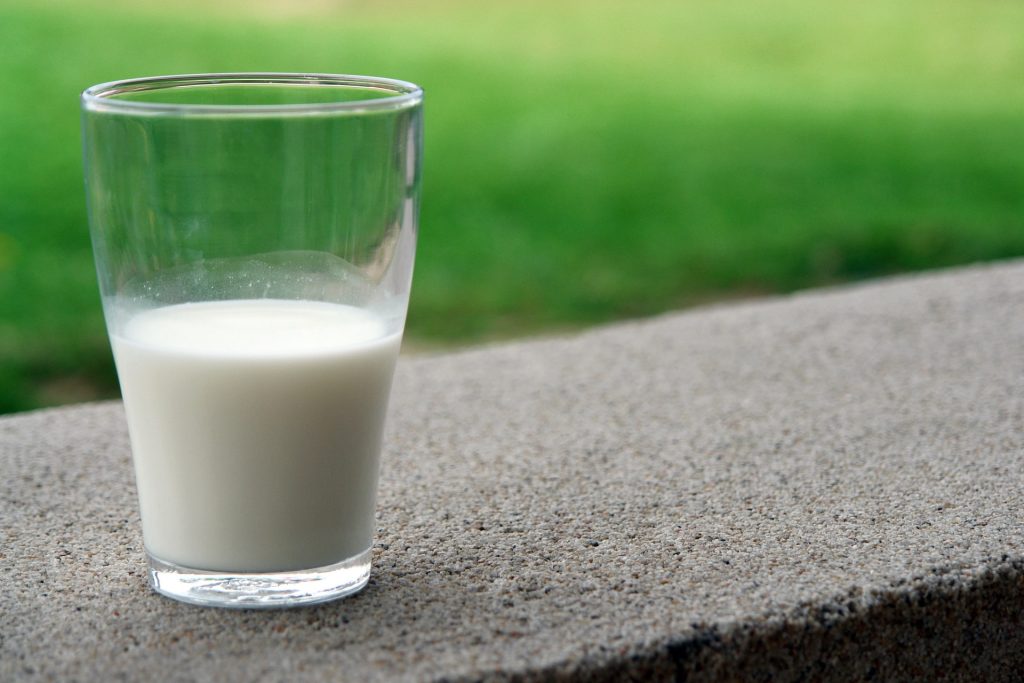
The ability to digest lactose is thought to have evolved in concert with milk entering the diet where dairy farming was commonplace, but a new study published in Nature paints a much grimmer picture: starvation and disease appeared to drive its spread through European populations.
Five thousand years ago virtually all humans were (like all other mammals) lactose intolerant, losing the ability to produce lactase to digest milk after weaning and suffering bloating, gas and diarrhoea as adults when they they drank milk.
Professor George Davey Smith, Director of the MRC Integrative Epidemiology Unit at the University of Bristol and a co-author of the study, said: “However, a genetic trait called lactase persistence has evolved multiple times over the last 10 000 years and spread in various milk-drinking populations in Europe, central and southern Asia, the Middle East and Africa. Today, around one third of adults in the world are lactase persistent.”
Using archaeological data, genetic samples and computer modelling, the team demonstrated that lactase persistence genetic trait was not common until around 1000 BCE, nearly 4000 years after it was first detected around 4700–4600 BCE.
“The lactase persistence genetic variant was pushed to high frequency by some sort of turbocharged natural selection. The problem is, such strong natural selection is hard to explain,” added Professor Mark Thomas, study co-author from University College London.
In order to establish how lactose persistence evolved, Professor Richard Evershed, the study’s leader, assembled a database of over 7000 animal fat residues from 13 181 pottery fragments. His findings showed that milk was used extensively in European prehistory, dating from the earliest farming nearly 9000 years ago, but its use waxed and waned in different areas and times.
To understand how this relates to the evolution of lactase persistence, the research team, led by Prof Thomas, tracked the presence of the lactase persistence gene using ancient DNA sequences from more than 1700 prehistoric European and Asian individuals. The first instance seen was after around 5000 years ago, and 2000 years later it was at appreciable frequencies and today is very common. Next, his team developed a new statistical approach to examine how well changes in milk use through time explain the natural selection for lactase persistence. Surprisingly, no association was found, challenging the long-held view the extent of milk use drove lactase persistence evolution.
Professor George Davey Smith’s team had been probing the UK Biobank data, comprising genetic and medical data for more than 300 000 living individuals, found only minimal differences in milk drinking behaviour between genetically lactase persistent and non-persistent people. Critically, the large majority of people who were genetically lactase non-persistent experienced no short or long-term negative health effects when they consume milk.
Professor Davey Smith added: “Our findings show milk use was widespread in Europe for at least 9000 years, and healthy humans, even those who are not lactase persistent, could happily consume milk without getting ill. However, drinking milk in lactase non-persistent individuals does lead to a high concentration of lactose in the intestine, which can draw fluid into the colon, and dehydration can result when this is combined with diarrhoeal disease.”
This can have implications for individuals who are unwell, according to Prof Smith. “If you are healthy and lactase non-persistent, and you drink lots of milk, you may experience some discomfort, but you not going to die of it. However, if you are severely malnourished and have diarrhoea, then you’ve got life-threatening problems. When their crops failed, prehistoric people would have been more likely to consume unfermented high-lactose milk – exactly when they shouldn’t.”
To test these ideas, Prof Thomas’s team applied indicators of past famine and pathogen exposure into their statistical models. Their results clearly supported both explanations – the lactase persistence gene variant was under stronger natural selection when there were indications of more famine and more pathogens.
The authors concluded: “Our study demonstrates how, in later prehistory, as populations and settlement sizes grew, human health would have been increasingly impacted by poor sanitation and increasing diarrheal diseases, especially those of animal origin. Under these conditions consuming milk would have resulted in increasing death rates, with individuals lacking lactase persistence being especially vulnerable. This situation would have been further exacerbated under famine conditions, when disease and malnutrition rates are increased. This would lead to individuals who did not carry a copy of the lactase persistence gene variant being more likely to die before or during their reproductive years, which would push the population prevalence of lactase persistence up.
“It seems the same factors that influence human mortality today drove the evolution of this amazing gene through prehistory.”
Source: University of Bristol

